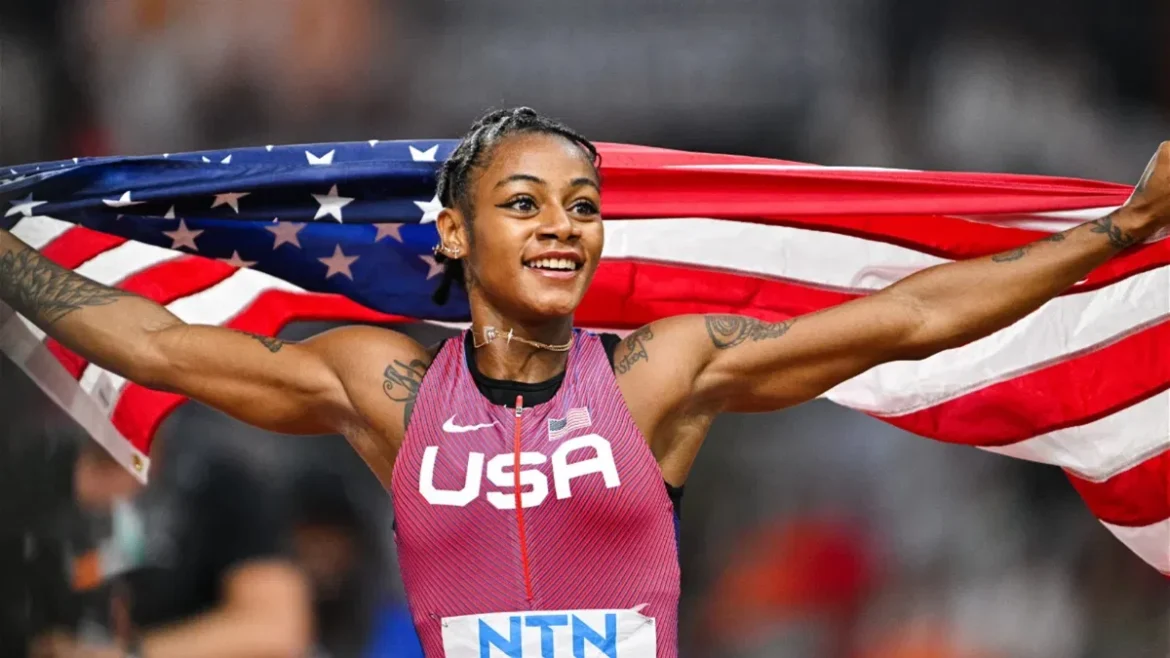Sha’Carri Richardson’s 2025 season opened with a jolt at the Seiko Golden Grand Prix in Tokyo, where the reigning 100m world champion surprisingly finished fourth, clocking 11.47 seconds against a -0.9 m/s headwind.
For fans, it was an eyebrow-raiser, this was the same athlete who lit up Budapest in 2023 with a blistering 10.65s championship record. But while the race result made headlines, the real story lies in how Richardson is preparing behind the scenes.
A Wildcard That Changed Everything
When Sha’Carri stormed to glory at the 2023 World Athletics Championships in Budapest, her victory was about seizing a rare opportunity. Entering the championships as a wildcard meant she skipped the highly competitive U.S. trials, a luxury that shielded her from the intense pressure of qualification and allowed her to focus purely on peaking at the right moment.
As athletics analyst Michael Anderson observed on YouTube channel The Final Leg Track & Field.
“She has the world wildcard to the World Championships in September. So she doesn’t have to worry about anything at this point in May.”
That wildcard provided her with freedom, freedom to fine-tune her starts, sharpen her mental game, and approach the season with strategic patience rather than desperation.
How Her Training Differs from the Pack

Fast forward to 2025, and Richardson’s wildcard for the World Championships in Tokyo means she’s following a completely customized training path. Unlike rivals like Twanisha “Titi” Terry and Melissa Jefferson, who must balance early-season meets with the grueling demands of the U.S. trials, Sha’Carri can afford to take a long-term view.
“We don’t know how her training is actually going… it’s going to be significantly different than someone like Titi Terry or Melissa Jefferson, who’s required to qualify through USA’s,” Anderson elaborated.
This distinction is crucial. Terry and Jefferson have to stay sharp early in the season just to secure their spots for Tokyo. Their programs emphasize race-readiness and consistency, with little margin for error. Meanwhile, Richardson and her coach Dennis Mitchell can gear her training toward peaking in September.
Rivals on Different Timelines
The story is equally nuanced when comparing Richardson’s situation to Caribbean sprint queens like Elaine Thompson-Herah and Shericka Jackson. Thompson-Herah, now 32, relies on experience and careful recovery management. Jackson, fresh off a hip injury that affected her 2024 campaign, has had to cautiously build back her top-end speed.
“It’s also going to be different than… Elaine, who’s at a different age right now, or even Shericka Jackson, who’s coming off injury last year,” Anderson noted.
This means that while Sha’Carri’s Tokyo opener seemed underwhelming, it was likely a calculated move, a tune-up race rather than a statement of form.
Can the Strategy Pay Off?
Richardson’s approach is all about peaking when it counts most. Her 2023 exploits in Budapest and her role in Team USA’s gold-medal-winning relay in Paris last season showed a sprinter capable of executing when the stakes are highest. The question now is whether this measured, personalized build-up will once again translate into championship brilliance.
Anderson sums it up well.
“Her focus, of course, is September… this performance doesn’t necessarily mean much because she can continue to make progress.”
So while Terry, Jefferson, Thompson-Herah, and Jackson face different pressures and timelines, Sha’Carri’s wildcard-fueled, tailor-made program puts her in a unique position, one where the Tokyo World Championships could once again be hers for the taking.


